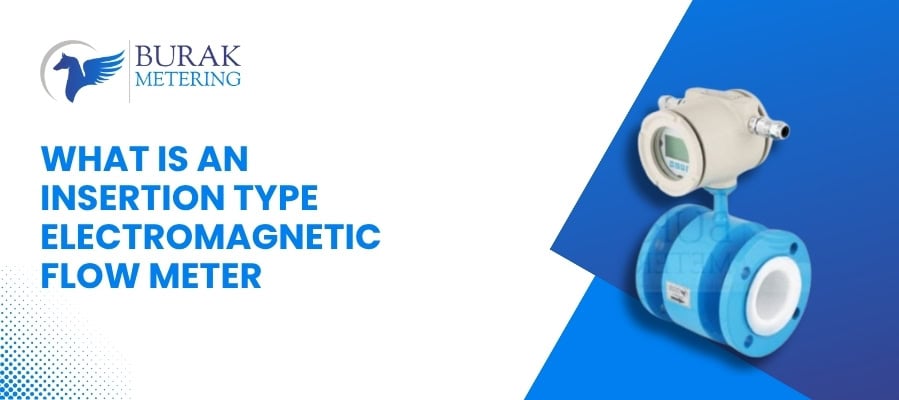 Phone
Phone

An insertion-type electromagnetic flow meter is a flow sensor that is inserted into a pipe through a small tap or hole. It has a probe or sensor rod that extends into the flow stream. The sensor section generates a magnetic field across the fluid. As the conductive fluid moves, it induces a voltage that the electrodes sense. The voltage is proportional to flow velocity by Faraday’s law. (see more on the working principle of the electromagnetic flowmeter)
Unlike full-bore electromagnetic flow meters that require replacing a section of pipe, insertion types require only a small opening. This makes them easier to add to existing pipelines. They are suited for large pipes or retrofit installations. Many insertion meters can operate with minimal interruption and at a lower cost.
The major parts include:
The sensor rod is placed at a depth specified by the manufacturer, allowing it to sample near the center of the flow. The transmitter filters, amplifies, and converts the induced voltage to a flow reading (volume per time).
Because insertion meters disturb flow less and require less structural change to pipework, they are often chosen when cost and downtime matter.
Learn more about what electromagnetic flow meters are.
Here are key benefits:
However, there are limitations:
You can also read about the advantages and disadvantages of electromagnetic flow meters.
Insertion-type electromagnetic flow meters find use in many industries and fluid systems. Below are common applications and typical use cases:
They monitor flow in municipal water supply lines, sewage systems, and effluent streams. They help detect leaks, balance network flow, and meter process water.
In chemical plants, they measure flows of acids, alkalis, or other conductive chemicals. They help in dosing, mixing, and balancing process streams.
They handle slurry lines, tailings return, and mining process waters with suspended solids. Their tolerance to abrasive content makes them suitable for these harsh settings.
They measure cooling water flows, feedwater, or condensate return flows. Accurate flow data helps in thermal efficiency and system control.
When fluids are conductive (e.g., saline or with additives), they can measure process or cleaning flows. Their design can use sanitary materials.
Insertion meters allow adding flow measurement capability to existing infrastructure without cutting out pipe segments. This is especially helpful in water networks or legacy systems.
In large distribution networks, insertion meters can be moved between sites to profile flows without permanent installation.
To get accurate readings and long service life, one must follow these guidelines:
In many systems, two to three pipe diameters upstream and downstream of the straight run are sufficient to stabilize the flow before measurement.
Burak Metering stands out as a top electromagnetic flow meter manufacturer in India. We build mag flow meters with high precision, low maintenance, and a wide choice of liner and electrode materials. Our devices support features like bi-directional measurement, empty-pipe detection, and remote interfaces (4-20 mA, RS485, Modbus). Because we operate locally, we can deliver faster lead times, supply spare parts quickly, and provide on-site support.
You should choose Burak because we combine strong technical features with local presence. Our in-house calibration lab meets ISO/IEC 17025 standards, giving traceable accuracy. Our flowmeter product line covers a broad size range and many industrial fluids, so you can pick a model suited to your process.
To discuss your flow measurement requirements or request a quotation, contact Burak Metering today.